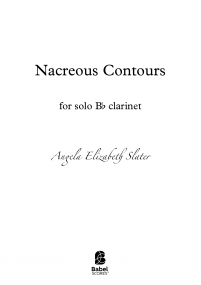Le Temps en Ruines
ISMN : 979-0-2325-4121-1
- Login to create your own lists
The piece Le temps in ruines takes its name from the homonymous book written by French anthropologist Marc Augé. The study and reflection on the ruins as social and artistic phenomenon has inspired the composition of this work, in which Augé’s idea of a frozen, static and pure time while staring old ruins can produce in us a state of happiness. Starting with his focus on the relation between ruins and nature –that crystallizes into Albert Camus’ visit to the city of Tipasa, Argelia- two basic musical materials are generated:
On the one hand, the ruins itself –partially architectonical constructions, partially natural elements such as stone, sand, etc.- are represented by percussive accents and ostinati, where the winds and strings use muted and particular attacks to produce their sound. On the other hand, a diffuse harmony is suggested -mainly by means of the strings- as mimesis of nature.
The particular combination of both basic materials opens a third space of imagination in which the ruins and nature, noise and harmony, are fusion and, in that assemblage, also redefined. Beauty becomes then a relative parameter.
I have imagined Albert Camus discovering -and also remembering- the ruins of Tipasa and translated that sound-world to the soloist, choir and orchestra. The most ‘melodic’ sections in charge of the choir are supposed to sound in the background, as if it was a dreamed music in Camus’ head.
Lastly, the space plays also an important role throughout the piece as it does in other pieces of mine (THULE, MNEMEA, etc.). The soprano, here as the bearer of Camus’ pantheistic impression of Tipasa, travels to the top of the church to expand, spatially speaking, the message of hope and happiness.
Annenkirche Dresden (Germany)
Annina O. Battaglia
Pages - 36








